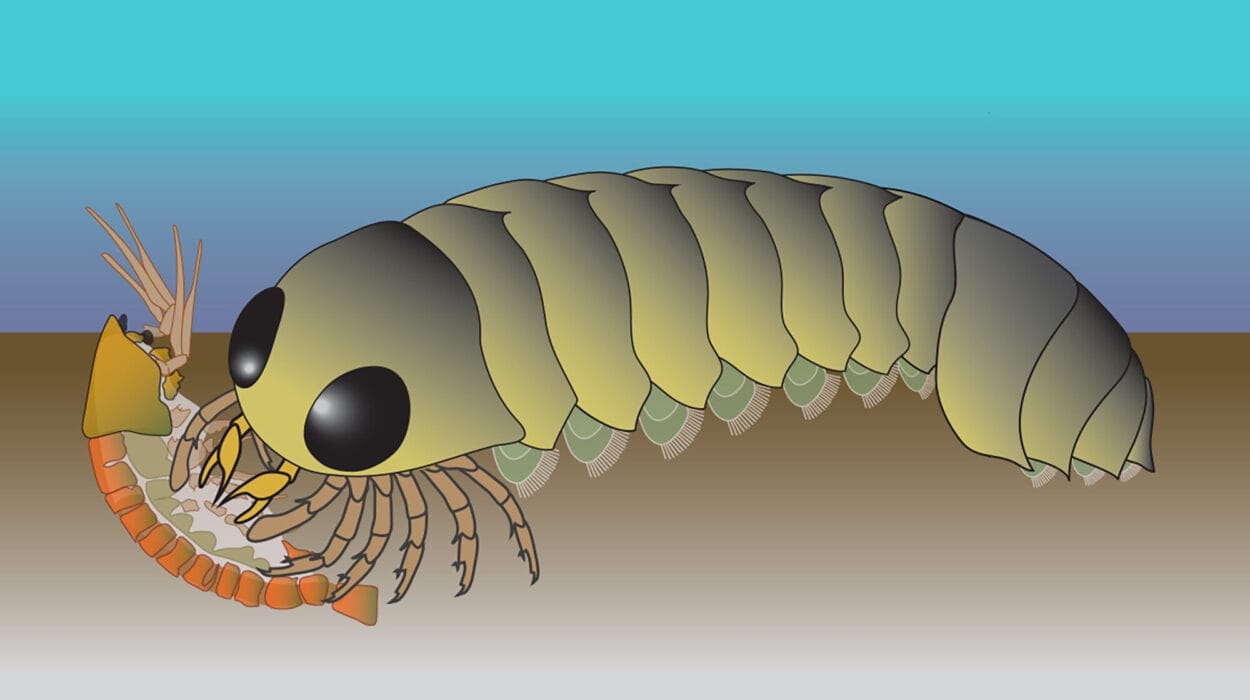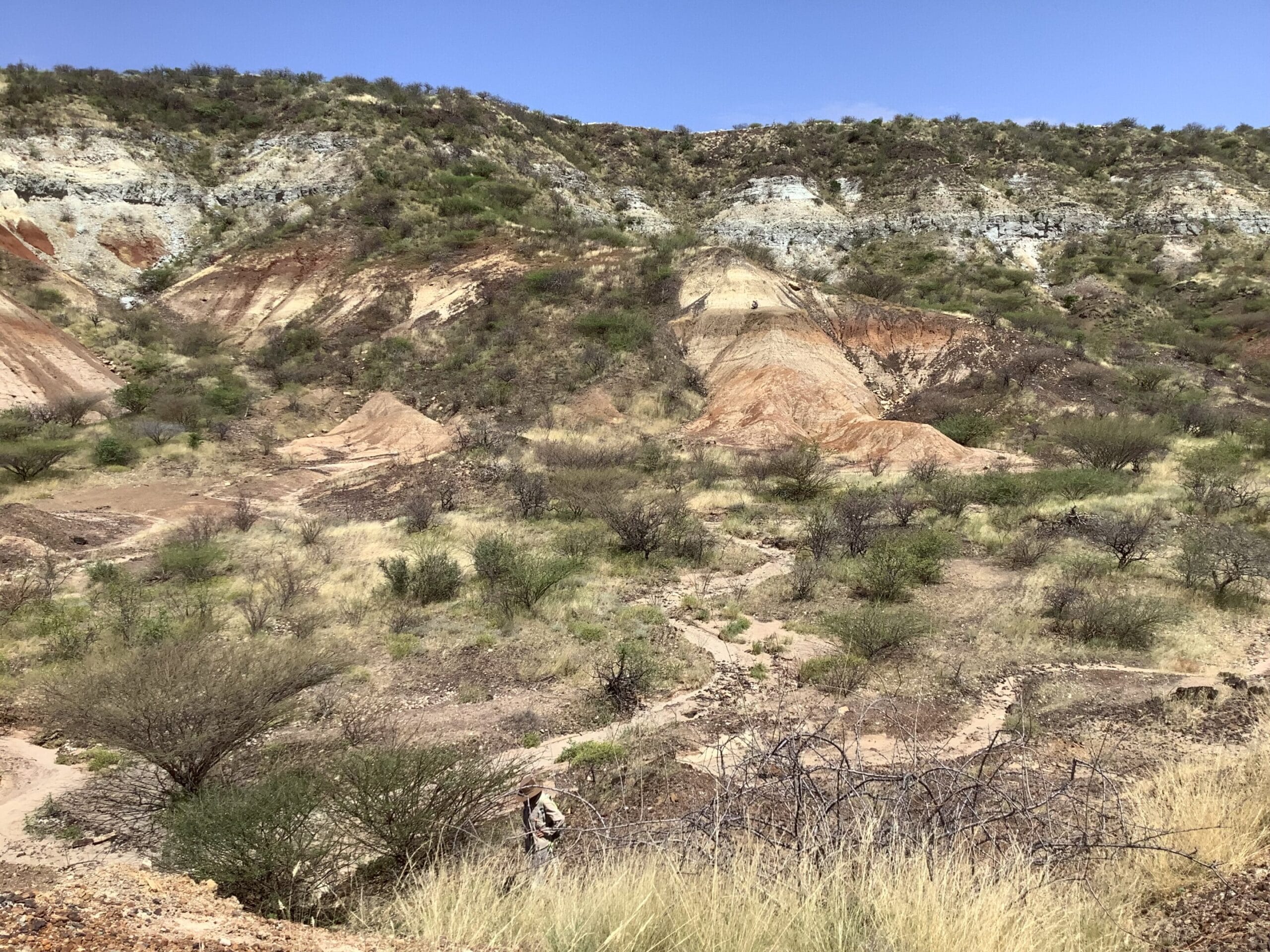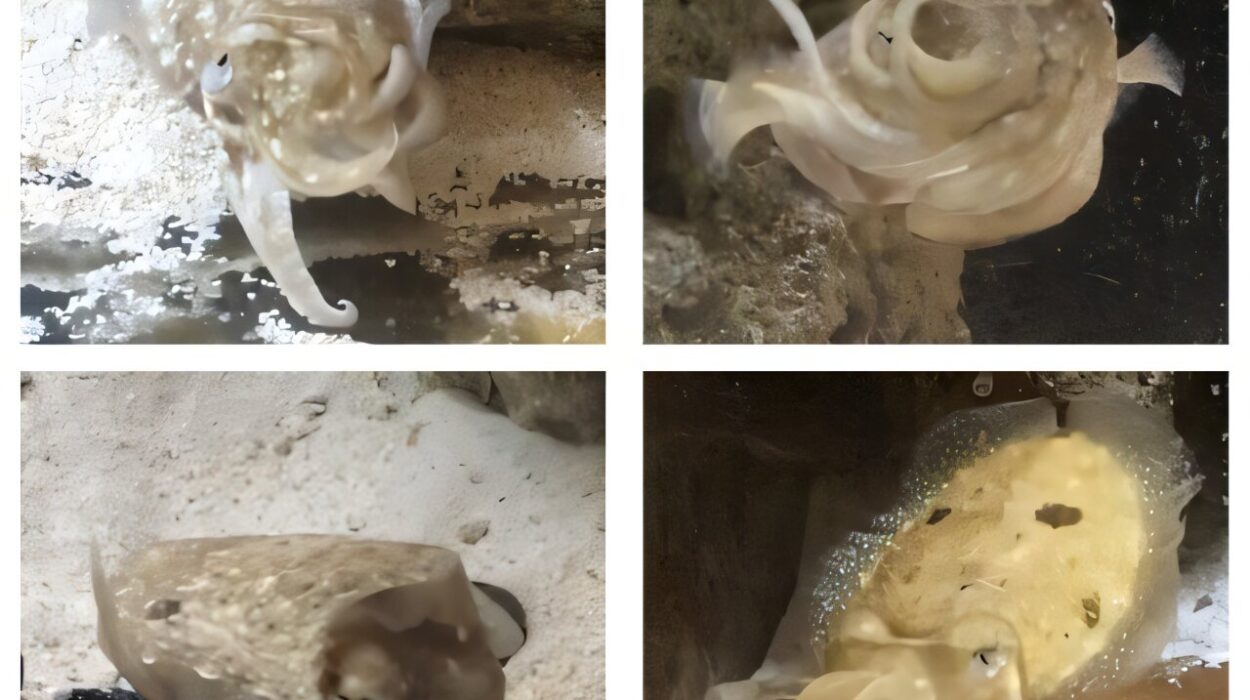In a world where we measure time in hours and days, where history is often seen through the lens of human events, it’s almost impossible to comprehend what “billions of years” truly means. Yet our planet, formed from star-born dust 4.54 billion years ago, has carried life for nearly as long. And long before mammals evolved, before dinosaurs roamed, even before multicellular life crawled across seafloors, there were microbes—silent, persistent, carving their whispers into stone.
The fossils left behind by these earliest life forms are not skeletons or shells but chemical traces, layered rocks, and microscopic textures preserved in Earth’s oldest rocks. They are fragile, controversial, awe-inspiring—and profoundly humbling. Each fossil on this list is more than just a clue to life’s past. Each is a testament to resilience, randomness, and the spark that ignited evolution’s long journey.
1. Stromatolites from the Dresser Formation, Australia – 3.48 Billion Years Old
In the scorching Pilbara region of Western Australia, life once quietly flourished in the shallows of ancient lagoons. Fossilized within the 3.48-billion-year-old rocks of the Dresser Formation are stromatolites—layered sedimentary structures built by cyanobacteria. These microbes lived in dense colonies, trapping sediment as they grew toward sunlight, forming distinct domed shapes.
Their formation tells a story not just of survival but of revolution. These microbes began pumping oxygen into the oceans—slowly, imperceptibly at first. Over hundreds of millions of years, that oxygen would transform the atmosphere and set the stage for complex life. The Dresser stromatolites are among the earliest widely accepted macrofossils, giving us the clearest glimpse into life’s first architects.
Geological skeptics once debated whether these were truly biological. But new analyses, including the presence of isotopically light carbon and clear bio-lamination, have silenced most doubts. These stromatolites don’t just resemble life—they are life, frozen in time.
2. Stromatolites from the Strelley Pool Chert, Australia – 3.43 Billion Years Old
Just a few dozen kilometers away from the Dresser Formation lies another cradle of ancient life—the Strelley Pool Chert. These stromatolites are a mere 50 million years younger but arguably better preserved. The fine-grained silica of the chert preserved astonishing detail: laminated layers that clearly show upward growth toward light, suggesting active, photosynthetic microbial life.
These organisms inhabited shallow marine environments. They created dome-like, conical, and even branching stromatolites—evidence of environmental adaptation. Their carbon isotope composition is biologically light, providing a geochemical fingerprint of ancient metabolism.
These fossils demonstrate not just the presence of life, but its resilience and complexity—an early, enduring symbiosis between life and the planet’s physical processes.
3. Microfossils from the Nuvvuagittuq Belt, Canada – Possibly 3.77–4.28 Billion Years Old
In 2017, scientists studying rocks in the Nuvvuagittuq Supracrustal Belt in Quebec uncovered something extraordinary: tiny tubular structures embedded in banded iron formations, formed near ancient hydrothermal vents. The researchers dated the rocks to between 3.77 and possibly as old as 4.28 billion years.
If confirmed, these could be the oldest fossils ever discovered, potentially predating the end of the Hadean eon—the era when Earth’s surface was still partially molten.
The tubular shapes resemble iron-oxidizing bacteria found today near deep-sea vents. The morphology, iron-rich composition, and carbon isotope signatures hint at biology. But controversy remains. Critics argue that some mineral processes might mimic biological shapes. Supporters counter that multiple lines of evidence—including the simultaneous presence of carbonate globules, hematite filaments, and contextual geology—point toward microbial origin.
If life appeared this early, it suggests an astounding possibility: that life emerged almost immediately after Earth became habitable. It implies that life, under the right conditions, may be inevitable.
4. Graphite from the Isua Supracrustal Belt, Greenland – 3.7 Billion Years Old
Southwestern Greenland holds some of Earth’s oldest sedimentary rocks. In 2016, researchers examining the Isua Supracrustal Belt identified graphite particles trapped within these ancient metamorphic rocks. What caught their attention was the ratio of carbon isotopes—particularly carbon-12, which is favored by living organisms.
The isotopic signature strongly suggests a biological origin for the graphite. While these aren’t fossils in the traditional sense—no structures or shapes are preserved—the chemical fingerprint is compelling. It’s the whisper of metabolism, not morphology.
These findings challenge our assumptions. They tell us life may have been present in oceans that were only just stabilizing. If proven biological, this graphite would represent life’s earliest carbon-based breath, trapped in stone 3.7 billion years ago.
5. Microbial Mats in the Barberton Greenstone Belt, South Africa – 3.22 Billion Years Old
In the Barberton Mountains of South Africa lies a geological window into the early Archean Earth. The 3.22-billion-year-old sediments of the Barberton Greenstone Belt hold laminated patterns and ripples that appear to be ancient microbial mats—similar to modern microbial communities found in shallow water environments.
The evidence includes thin, organic-rich layers, stromatolitic textures, and micro-laminations formed by mat growth. The mats suggest that these early microbes lived in tide-dominated coastal environments and interacted with water currents in complex ways.
These mats tell of community—a coordinated microbial response to light, sediment, and flow. They are among the earliest examples of ecosystems, long before animals or even multicellular organisms evolved.
The Barberton fossils also provide a record of early Earth’s surface conditions—proving that oceans, tides, and microbial life were already intricately linked.
6. Apex Chert Microfossils, Australia – 3.465 Billion Years Old (Controversial)
Discovered in 1983 and initially celebrated as the world’s oldest fossils, the Apex Chert microfossils from Western Australia appeared to show clear microstructures—filament-like shapes consistent with bacteria. These tiny rods, just a few micrometers long, were interpreted as cyanobacteria-like organisms that once lived in hot spring-fed oceans.
However, their biogenicity has come under intense scrutiny. Some researchers argue that the structures could have formed through purely geological processes, such as the crystallization of quartz or hydrothermal alteration. Still, supporters claim that chemical signatures—like carbon isotope ratios—support their biological origin.
Whether these structures are truly biological or not, the Apex Chert remains an important case study in the difficulty of distinguishing life from lifelike patterns. It reminds us that fossil science, especially at such deep timescales, is a field of uncertainty, debate, and evolving understanding.
7. Hematite Filaments from Quebec’s Nuvvuagittuq Belt – 3.77 Billion Years Old
In the same ancient iron formations that yielded potential tube-shaped microfossils, scientists found branching filaments made of hematite—a form of iron oxide. These thread-like forms resemble structures produced by iron-metabolizing microbes living near hydrothermal vents today.
The hematite filaments show evidence of biological growth: concentric layers, tapering shapes, and cross-branching patterns. Their iron-rich composition also supports the idea that early life used iron oxidation as a primary energy source.
The Nuvvuagittuq hematite filaments offer a glimpse into a primordial biosphere powered not by sunlight but by chemistry—chemosynthesis. If verified, they extend the story of life not just in time, but into Earth’s shadowy depths, where sunlight never touched.
8. Sulfur-Based Microbes in the Dresser Formation – 3.48 Billion Years Old
Beyond stromatolites, the Dresser Formation in Australia also holds another extraordinary fossil type—chemical traces of sulfur-metabolizing bacteria. These anaerobic microbes didn’t use sunlight or oxygen. Instead, they fed on sulfur compounds, thriving in hot, sulfur-rich environments like volcanic hot springs.
Sulfur isotope ratios in pyrite grains from this formation show strong evidence of microbial fractionation—an unmistakable biosignature. These tiny chemical shifts can only be explained by metabolic activity.
These ancient sulfur-eaters prove that early life was highly adaptable. Even in toxic, low-oxygen settings, it found a way to survive. They suggest that life began not on serene seashores, but amid fire and poison—worlds that resembled today’s Mars or Jupiter’s moon Europa more than modern Earth.
9. Grypania Spiralis – 2.1 Billion Years Old
The fossil record takes a dramatic turn with Grypania spiralis, one of the first large and likely multicellular organisms ever discovered. Found in Michigan and India, Grypania appears as coiled ribbons up to 2 centimeters long. Its identity remains uncertain—some consider it a eukaryote, perhaps a giant bacterium or early algae—but its size alone is remarkable.
Unlike earlier microbial fossils, Grypania displays organized, repeated growth—suggesting cellular coordination. While not an animal or plant, it may represent one of the first steps toward complex life.
Dated to 2.1 billion years ago, Grypania flourished shortly after the Great Oxidation Event—when oxygen levels spiked and new ecological niches opened. It reminds us that complexity didn’t explode all at once; it began with tentative coils and spirals in dark oceans.
10. Francevillian Biota – 2.1 Billion Years Old
In the sedimentary rocks of Gabon, Africa, scientists uncovered fossilized remains of large, colonial organisms that lived 2.1 billion years ago. These fossils, known as the Francevillian Biota, include flattened, disc-shaped, and sometimes branching forms—some as large as 17 centimeters. They appear to have lived in oxygenated environments, displaying coordinated structures that suggest multicellularity.
What’s most stunning about the Francevillian fossils is their timing. They represent a rare, early experiment in complexity—long before the Cambrian explosion. But they vanished just as mysteriously as they appeared, possibly due to a drop in oxygen or climate shifts.
For 1.5 billion years afterward, life retreated into microscopic simplicity. The Francevillian Biota is a reminder that evolution isn’t a straight line but a cycle of innovation, extinction, and rebirth.
A Final Reflection: What These Fossils Really Mean
These ten fossils span more than two billion years of Earth’s history—yet they represent only a fraction of life’s story. Some are unambiguous; others are controversial. Some lived in sunlit shallows, others in pitch-black volcanic vents. Some changed the world, and some vanished without a trace.
Together, they reveal one undeniable truth: life began early, adapted quickly, and persevered under conditions we can barely imagine. These ancient organisms left their fingerprints in the form of isotopes, textures, and mineral threads. They whisper to us across eons—not in words, but in chemistry, in geometry, and in echoes of survival.
They also remind us that we are not separate from that story. The oxygen in our lungs was forged by cyanobacteria. The carbon in our cells was once filtered through microbial mats. The same planetary processes that birthed those earliest forms still beat in our blood, our breath, and our bones.
To study the oldest fossils is not merely to look into the past. It is to see the ghost of ourselves—life stubborn, beautiful, and eternal, against all odds.






